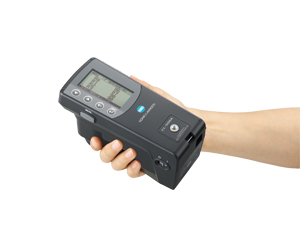
The Konica Minolta CL-500A is a handheld illuminance spectrophotometer that conforms to both DIN and JIS standards. This device can measure the general color rendering index (CRI), as well as individual color rendering indexes R1-R15, color temperature, illuminance, chromaticity and the Scotopic-Photopic (S/P) ratio. Besides being compact & lightweight, the CL-500A is also an extremely flexible tool. This device can be used as a standalone product in the field or in the lab, and can be used in conjunction with data management software. As a sensor-based instrument, it can accurately measure narrow bandwidth emitters such as LED, OLED, and gas-discharge light sources. So what makes the CL-500A a superior meter against the competition?
Not all spectral sensors are created equal.
The rules in the real world also apply to the world of scientific instruments – you get what you pay for! When a product is priced counter to what the market is then there is a reason for it. One of the most important components of a spectrally based meter is the sensor itself. This is the engine that drives the meter. One way cheaper instruments reduce cost is to compromise the sensor. Inferior sensors use blue phosphors to enhance blue wavelength sensitivity. These phosphors fade and degrade over time. The low-grade sensors will lose blue sensitivity much quicker. These lower cost meters will drift and go out of tolerance a lot faster. This point is very important because all modern LED lights, especially white LEDs, have a lot of blue energy content. If a meter loses blue wavelength sensitivity, then all the LED readings will be full of errors! The CL-500A starts off the right way by first using a high-grade spectral sensor and to keep its accuracy, it has an internal UV light source which allows the CL-500A to accurately perform a periodical self-calibration in less than 30 seconds.
Pay attention to the optical design!
Photometry is an exact science and there is no room for compromise or improvisation. CIE, IES, and other governing bodies dictate the metrics and clearly state how they must be measured. Konica Minolta works with these different institutions to ensure that we adhere to the standards. The size of the receptor sensor is not arbitrary. The area of the receptor sensor is related to the size of the sensor and the optical path taken. To guarantee the most accurate readings we apply a specific formula and geometry. Substandard meters will compromise on the design whether for aesthetics or for cost reduction and provide unreliable readings.
Unparalleled service and support.
Konica Minolta as a company has been around since the late 1800s. We are always ready to provide service and support should you ever need it. This is one of the main reasons why an overwhelming number of companies choose and rely on Konica Minolta light meters in the labs, production and in the field.